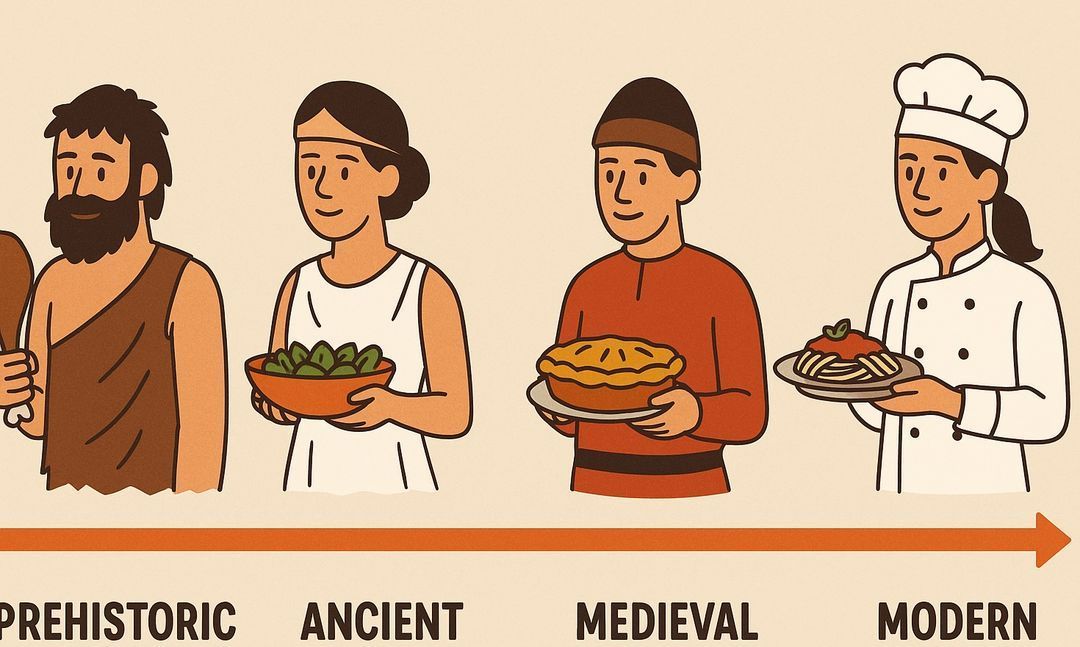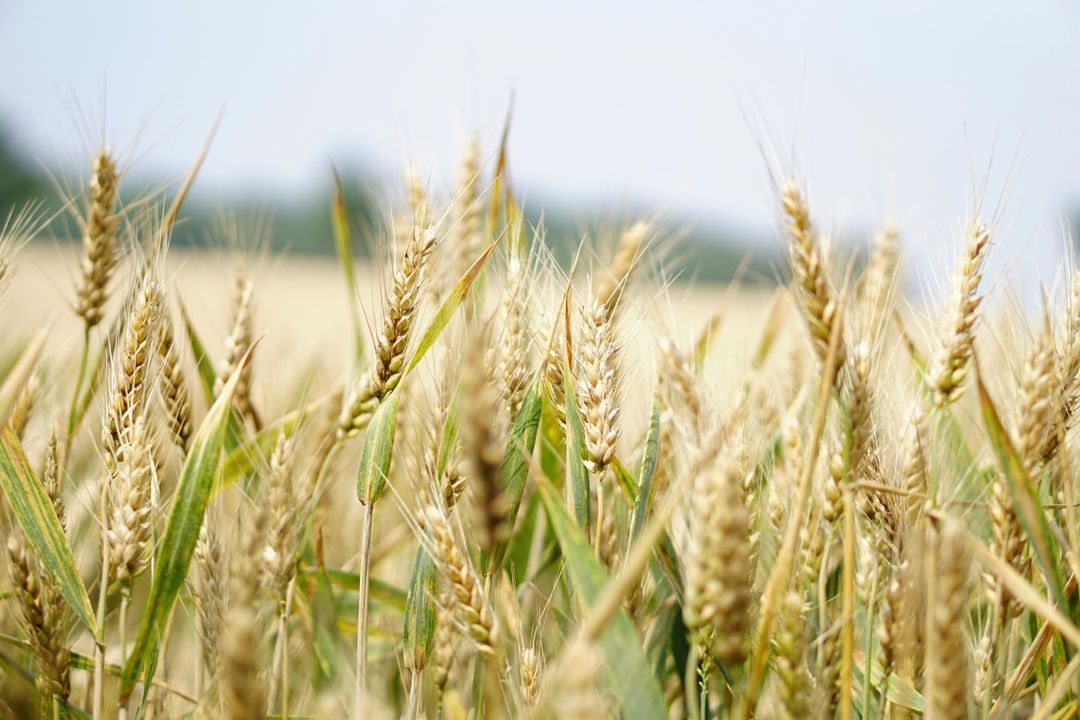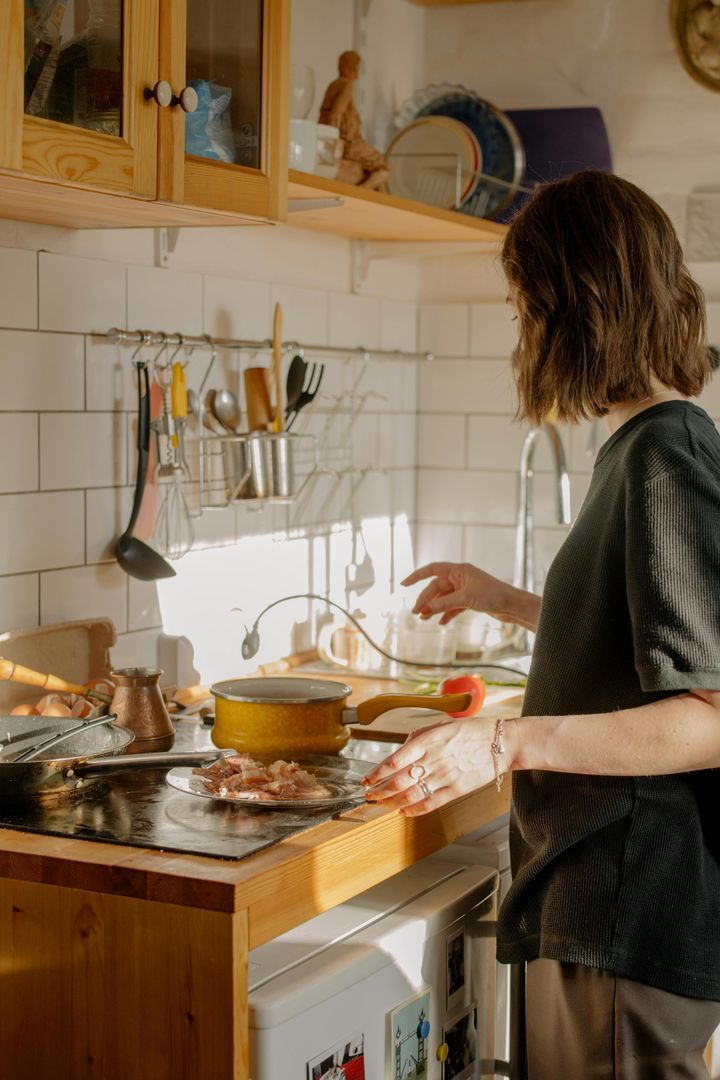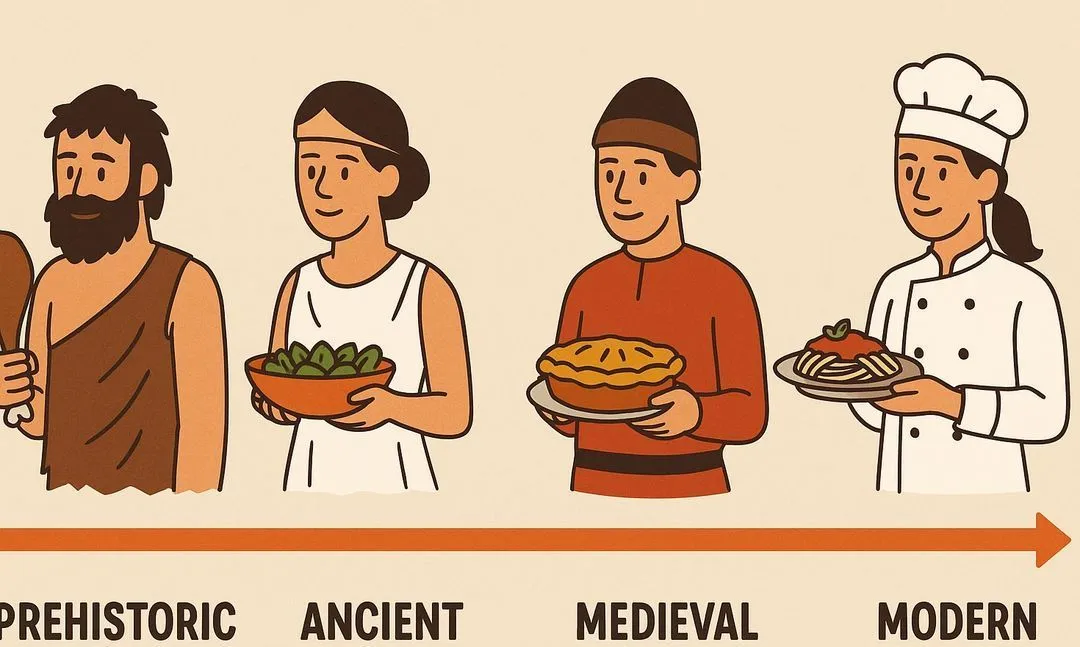From hands to pot: the evolution of cooking from its origins to the modern era

Cuisine is a concept that goes far beyond the simple preparation of food; it is the expression of our history, our culture, and our ingenuity. Every dish we prepare, every technique we employ, is the fruit of millennia of experimentation and adaptation. Modern cuisine, which we today associate with a series of sophisticated methods, technological tools, and exotic ingredients, is the result of a long evolution that began long ago.
From fire that enabled the first cooking, to agriculture that stabilized food resources, to the innovations of modern cuisine, every phase of our food history has contributed to building what we consider “cuisine” today.
The origins: fire as the first step
Imagine standing before a flame lit for the first time. For our ancestors, fire was not only a source of heat and light, but a powerful weapon in the hands of survival. While fire was initially used for protection from predators, humans soon discovered that cooking food not only improved its flavor, but also made it safer and easier to digest. The earliest forms of cooking were extremely rudimentary: meat and vegetables were roasted on hot stones, but each step in perfecting these techniques marked a momentous change.
A fascinating example comes from archaeology: the cooking stones used in Africa and Asia, where fish and meat were cooked in small natural ovens. Another important step was the creation of ceramic vessels , which allowed for more controlled cooking, giving rise to pot-and-pan cooking, essential for creating soups and stews.
Agriculture: The Birth of Diet and Cuisine as We Know It Today

If the discovery of fire marked the beginning of cooking, the invention of agriculture around 10,000 years ago radically changed our approach to food. Until then, the human diet depended on hunting and gathering , and foods were mostly seasonal and wild. With the introduction of stable crops, such as cereals (wheat, barley, corn) and legumes , humans freed themselves from the constant search for food and began to settle in fixed locations.
At the same time, the domestication of animals made resources such as milk , meat , and eggs available, which profoundly changed cuisine. In many ancient cultures, agriculture not only changed the basic diet but also encouraged the creation of more complex and elaborate dishes . The concept of seasonality began to be crucial, and cuisine adapted accordingly.
An interesting historical example is the influence of agriculture on the civilizations of Ancient Egypt , where bread, made from local grains like barley, became a staple food. This connection between agriculture and cuisine not only improved the diet, but also fostered the creation of culinary traditions that are still preserved today.
The Middle Ages: Between Cultural Exchanges and Exotic Spices
In the Middle Ages , the great trade routes and the Crusades led to the trade of spices and exotic ingredients from the East. These elements greatly enriched European cuisine, which began to include ingredients such as saffron , ginger , curry , and black pepper . In Italy, Arab influence brought the use of eggplant , sugarcane, and oranges , which forever changed the countrys culinary traditions.
During this period, cooking became professionalized, and home kitchens became dedicated spaces, with increasingly sophisticated utensils, such as copper pots , ladles , and graters . Food preparation, which had previously been an essential practice, began to transform into a true art, where the pursuit of flavor and the preservation of foods through techniques such as salting and smoking became fundamental.
The modern kitchen: technological innovation

With the advent of the Industrial Revolution , the kitchen underwent a radical transformation. The introduction of new tools such as the electric oven and the refrigerator allowed for longer food preservation and faster preparation. The industrialization of food and technological innovation led to the birth of the modern kitchen , where food preparation became increasingly rapid and automated.
A pivotal moment in the history of modern cuisine was the invention of vacuum packing in the 1950s, which allowed for extending the shelf life of foods while preserving their nutrients and flavors. In recent decades, innovations such as sous vide and molecular gastronomy have pushed cuisine to new heights, making science a fundamental ingredient in the preparation of dishes.
Cuisine as a cultural and sustainable expression
Today, cuisine has become a global culture , embracing influences from every corner of the world, while also addressing modern challenges such as sustainability and food ethics. Interest in organic food , sustainable agriculture , and the rediscovery of local products have returned to center stage, with a return to more natural preservation and preparation techniques.
Cuisine such as Mediterranean , Asian , and Latin American continue to evolve, but are strongly influenced by the principles of health and sustainability . Dishes such as vegan , organic , and gluten-free are now part of everyday cooking, responding to the new dietary needs of a population increasingly attentive to the quality and provenance of food.
Conclusion: cooking, a never-ending journey
Cuisine, from its birth to the present day, has been a journey of constant evolution. Each era has left its mark, each innovation has opened up new possibilities. But what never changes is the essence of cuisine: it is an art that unites food with culture, that tells the stories of distant people and lands, and that today invites us to reflect on how we can use food not only to nourish ourselves, but also to build a healthier and more sustainable future.
And even though technology has radically changed the way we cook, the meeting of creativity and tradition continues to be the beating heart of every dish we prepare.

flavio_campaniolo
Data di inserimento 14 mag 2025
Report article


Comments
There are no comments yet.